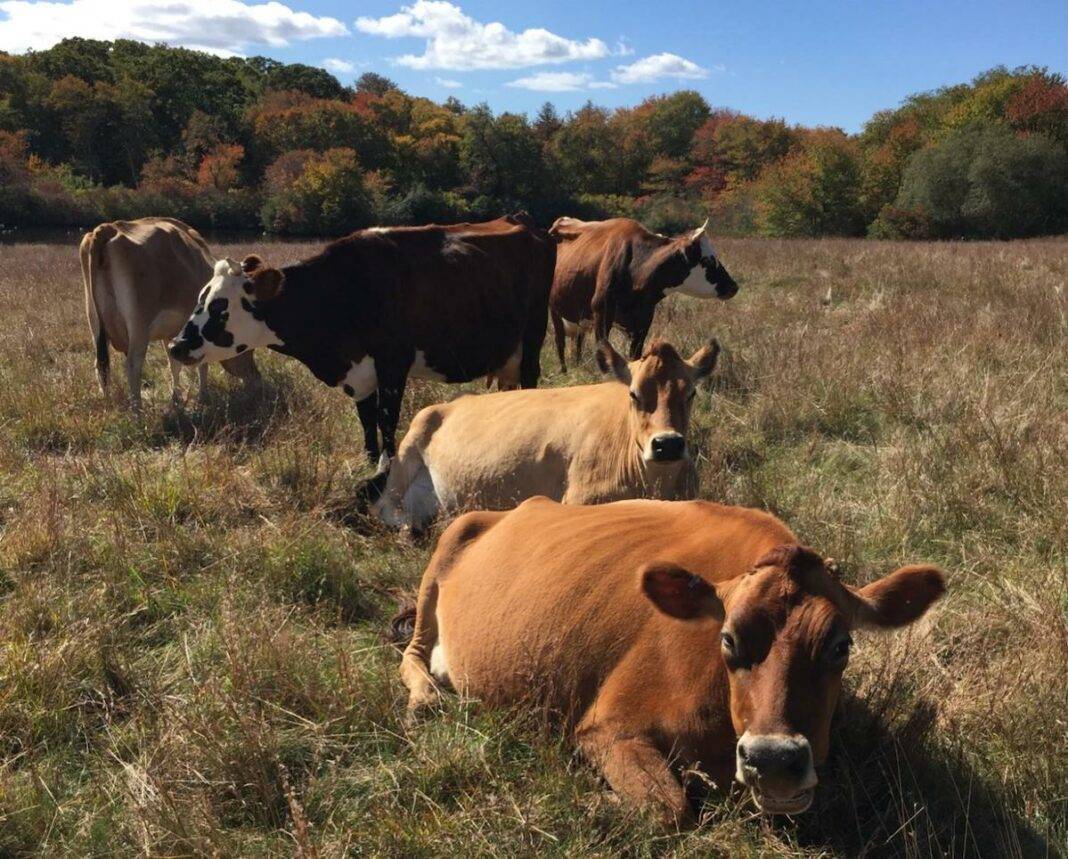Because everything’s betta with feta.
Feta, the creamy, crumbly Greek specialty cheese, improves most salads, not just Greek ones, adding a slightly salty, tangy accent. But beyond salads, try adding crumbled feta to sautéed greens, roasted vegetables — especially potatoes or carrots, eggs, grain dishes, pasta or bean salads, and dips for additional flavor.
On the Island, there’s one place that makes handmade local feta, Mermaid Farm and Dairy on Middle Road in Chilmark, a small, family farm with about 40 cows. Allen Healy and Caitlin Jones own and operate the farm and are the cheese and yogurt makers as well.
Making their feta is a two-day process filled with subtle challenges, and includes pasteurizing, cutting, stirring (a lot of stirring), hooping, flipping and brining — not to mention cleaning and sanitizing 100 or so cheese molds and the entire space between batches.
But the end result: delicious! Their feta is extremely popular on the Island. My recommendation: Stock up before the summer season when it often runs out. One of only two dairies on an Island that once boasted a dozen dairy farms in each town, Mermaid also makes four or five other farmstead cheeses named for Vineyard namesakes, like the Carding Mill Blue or Tiasquam Tomme. Their own yogurt and the unique fruit and yogurt lassis — a tasty drinkable snack — also keep Islanders running.
The word feta is derived from the Italian word fetta or “slice” and can vary widely in flavor, salt level, and texture. That often depends on whether it’s made from sheep, goat, or cow milk. Where the animals munch their grass or what stage they are in lactation all can affect the taste.
Each batch of Mermaid’s feta starts with about 45 to 55 gallons of their cows’ milk pasteurized to 145 degrees in a 55-gallon vat pasteurizer in the yogurt/cheese-making room at the farm. After it cools to about 93 degrees, a small amount of culture is added, which is a bacteria to develop the lactic acid for flavor as well as for food safety. The only other ingredient added (besides salt) is rennet, an enzyme used for coagulation.
The rennet turns the mixture to the consistency of gel. The cheese makers cut the gel — now called curd — with a vertical cheese cutter (picture small cheese wire cutters only larger), then a horizontal cheese cutter gently breaks up the chunks of curd. This starts the process of releasing the whey (the liquid). They then stir the batch, still in the vat pasteurizer, by hand non-stop for 30 to 45 minutes until the curds are fully formed and springy to the touch.
The whey is scooped off, leaving the feta to be loaded into 1/2-pound molds sitting on a draining table overnight. The next day the cheese is unmolded and put in large buckets filled with a saturated brine (23 percent salt), which gives feta its characteristic slightly salty flavor. The buckets are transferred to the cheese cave where flavors further develop for four hours. Finally, the feta is packaged in the final brine (about 3 percent) for sale.
This batch of 45-55 gallons of milk becomes about 50 pounds of feta, sold in half-pound containers, ready for kitchen use.
Among my favorite salads is a farro salad with kale, apple, and dried cranberries topped with crumbled feta. This time of year is perfect for watercress or arugula salads topped with strawberries and feta.
A good summer appetizer for feta is Roxanne Kapitan’s Mediterranean feta spread, offered below. An easy side is crumbling feta on roasted potatoes, perfect to accompany a roasted chicken or skewers on the grill. For additional recipes using feta, look in your kitchen library or to either my kale or salad book; you’ll have another 18 recipes. (I’m a feta fanatic.) You, too, might be mumbling my favorite saying before you are done with a container.
Find the feta at the Mermaid Farm and Dairy’s self-serve stand located at 9 Middle Road in Chilmark. The farm also produces and sells raw milk, yogurt, lassis, aged cheese, produce, and seedlings.

